Linnea Tanner's Blog
November 24, 2025
Bonnie Suchman What Remains is Hope #HistoricalFiction #Holocaust #FamilyHistory #BlogTour #TheCoffeePotBookClub @BonnieSuchman @cathiedunn
I’m delighted to host Bonnie Suchman as the featured author in The Coffee Pot Book Club Blog Tour being held between November 17th – 28th, 2025. Bonnie Suchman is the author of the Historical Fiction, What Remains is Hope (The Heppenheimer Family Holocaust Saga), published by Black Rose Writing on October 2, 2025 (360 pages).
Below are highlights of What Remains is Hope, Bonnie Suchman’s author bio, and her guest post about the historical research for the book
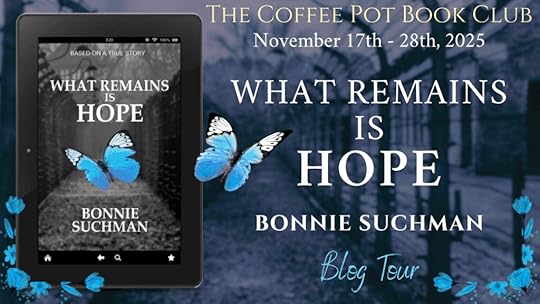
Tour Schedule Page: https://thecoffeepotbookclub.blogspot.com/2025/10/blog-tour-what-remains-is-hope-by-bonnie-suchman.html
HIGHLIGHTS: WHAT REMAINS IS HOPE
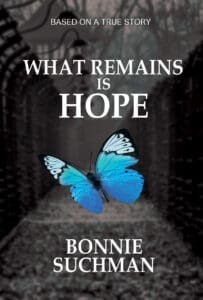
What Remains is Hope
(The Heppenheimer Family Holocaust Saga)
By Bonnie Suchman
Blurb:
Beginning in 1930s Germany and based on their real lives, four cousins as close as siblings—Bettina, Trudi, Gustav, and Gertrud—share the experiences of the young, including first loves, marriages, and children.
Bettina, the oldest, struggles to help her parents with their failing business. Trudi dresses in the latest fashions and tries to make everything look beautiful. Gustav is an artist at heart and hopes to one day open a tailoring shop. Gertrud, the youngest, is forced by her parents to keep secrets, but that doesn’t stop her from chasing boys. However, over their seemingly ordinary lives hangs one critical truth—they’re Jewish—putting them increasingly at risk.
When World War II breaks out, the four are still in Germany or German-occupied lands, unable or unwilling to leave. How will these cousins avoid the horrors of the Nazi regime, a regime that wants them dead? Will they be able to avoid the deportations and concentration camps that have claimed their fellow Jews? Danger is their constant companion, and it will take hope and more to survive.
Praise for What Remains is Hope:
“Readers will find this follow up to Suchman’s prior novel, Stumbling Stones, both a heartbreaking reminder of the Holocaust’s atrocities and a compelling tribute to a family’s refusal to surrender to despair…Richly compelling Holocaust account, centered on the power of hope.“~ Booklife by Publishers Weekly
“Author Bonnie Suchman has a way of making every moment count with her characters in a narrative that feels powerfully real as she spins deeply personal stories against a sweeping and tragic backdrop of history. ..What Remains is Hope is historical fiction at its best, and I’d highly recommend it to fans of gripping fiction that’s emotionally resonant and grounded in truth.” ~ K.C. Finn for Readers’ Favorite
Buy Link:
Universal Buy Link: https://books2read.com/u/mvJNLV
This book is available to read on #KindleUnlimited.
AUTHOR BIO: BONNIE SUCHMAN

Bonnie Suchman has been a practicing attorney for forty years. Using her legal skills, she researched her husband’s 250-year family history in Germany, publishing the award-winning, non-fiction book, Broken Promises: The Story of a Jewish Family in Germany, as a result.
Those compelling stories became Suchman’s Heppenheimer Family Holocaust Saga. The first in the series, Stumbling Stones, was a Finalist for the 2024 Hawthorne Prize for Fiction, and recently, her family traveled to Frankfurt, Germany, to install stumbling stones for her husband’s Great Aunt Alice and her husband Alfred, the real-life characters in the book.
What Remains is Hope is the second novel in the saga. In her free time, Bonnie is a runner and a golfer. She and her husband reside in Potomac, Maryland.
Author Links:
Website Twitter / X Facebook Instagram Pinterest
Book Bub TikTok Amazon Author Page Goodreads
HISTORICAL RESEARCH: WHAT REMAINS IS HOPE
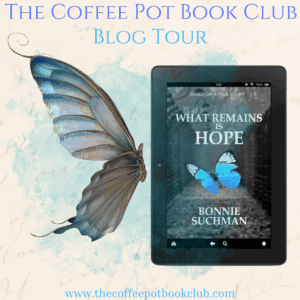
My research into the lives of the four cousins in What Remains is Hope actually began as a genealogical exploration of my husband family, who lived in Germany before World War II. After three years of researching, I published a history that traced the family back to around 1700. But after the book was published, I decided I was not finished telling the family’s story. To provide a fuller and richer story, I chose to write their stories as novels. The first novel, Stumbling Stones, was published in May 2024.
In doing genealogical research, most people start with Ancestry.com, and that is where my search began. But that was only the beginning for me, and my search led to the archives of a number of German states, as well as the archives of relevant museums and organizations. Many of these documents contained important information about the family. For example, in order to receive permission to leave Germany, a German Jew was required to receive a tax clearance certificate from the Finance Office. Those files contained documents describing in excruciating detail the challenges faced by the family in trying to leave. At times, I could almost hear their voices in reading the various documents, pleading for a chance to escape.
But researching the cousins’ lives also presented an emotional challenge I wasn’t expecting. As would be expected, I needed to obtain records from the various concentration camps and ghettos, and reviewing those records was often heartbreaking. In addition, in researching the family, I discovered that many of the records I was reviewing were actually preserved by the Nazis to be used in order to prove who was a Jew, which was quite chilling. Some records were lost only because they had been in buildings bombed by the Allies during the war.
I wrote What Remains is Hope as a novel, but tried to make sure that everything in the book was factual. That involved reading the newspapers and journals of that period, including using Goethe University’s remarkable searchable tool. Frankfurt’s Institute for Urban History has created an extensive archives of the history of the Holocaust period, including a detailed description of life in Frankfurt during the 1930s. In addition, I read extensively of the period, so that I could understand the impact of the period on the cousins and why they made the decisions they did.
Finally, I was fortunate in that I was able to rely on first-hand knowledge from some family members. One cousin’s family member shared with me detailed remembrances about the family’s life in France during the war. And another cousin’s child provided me with touching accounts of his life in Munich during the war, which I included in the novel, including when he received the stuffed teddy bear mentioned in the novel from his Oma Henny (which he still has).
 Twitter: @cathiedunn
Twitter: @cathiedunn
Instagram & Threads: @thecoffeepotbookclub
Bluesky: @cathiedunn.bsky.social
November 21, 2025
Barnes & Noble Book Fairs 22Nov Fort Collins 23Nov Boulder @BNBoulder @BNFtCollins @BN @COGreatAuthors @JudithBriles #Colorado #books #gifts #weekend #bookreaders #holidaygifts
Children’s, Suspense, Action, YA Fantasy and How-to Books Await You!
Perfect for Holiday ShoppingB&N Fort Collins (Nov 22nd) and B&N Boulder (Nov 23th)
Join me and other award-winning and best-selling local authors at the Barnes & Noble Book Fairs in support of the Colorado Authors’ Hall of Fame. The signing events will feature local authors of all genres including children’s books, young adult fantasy, historical fiction, romance, and more. For any purchase that you make at each respective bookstore that day, Barnes & Noble will contribute to the Aspiring Authors Scholarships sponsored by the Colorado Authors’ Hall of Fame.
On Saturday, November 22rd, you can meet the authors and get your book signed at B&N Fort Collins (4045 S. College Ave, Ft. Collins, CO 80525) from 9:00 am to 5:00 pm.

On Sunday, November 23th, the Colorado authors will be at B&N Boulder (2999 Pearl Street, Boulder, CO 80301) to sign their books from 10 am to 5 pm.
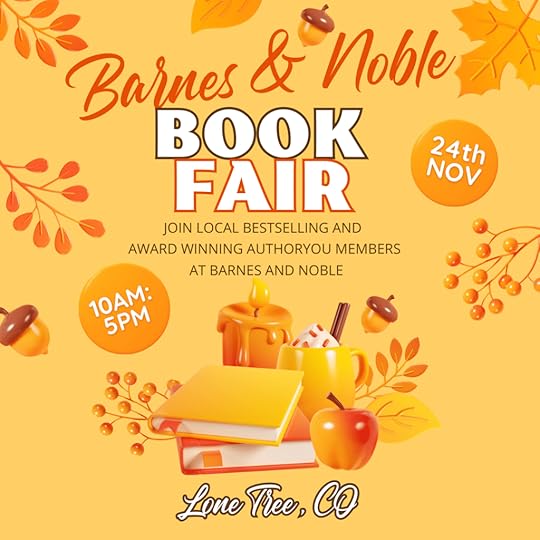
For more information about the Colorado Authors’ Hall of Fame and the Aspiring Authors Scholarships, visit www.ColoradoAuthorsHallofFame.org
Join us at the nearest B&N bookstore to you!
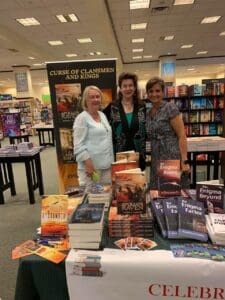
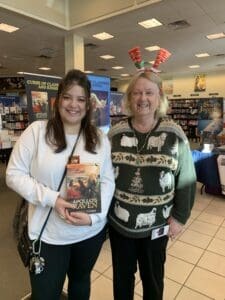
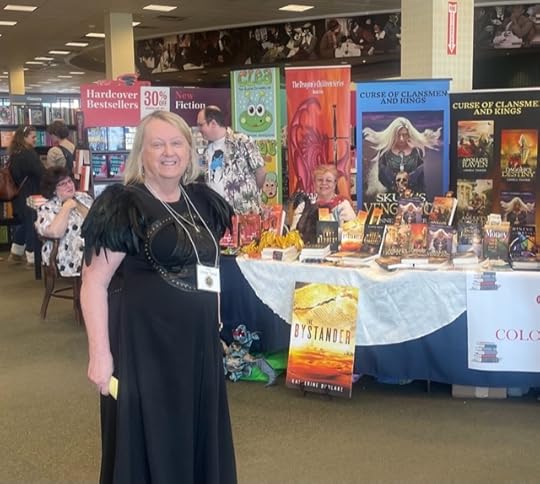
November 16, 2025
Blog Tour Luciana Cavallaro The Race for the Lost Coin #Suspense #Thriller #GreekMyth #CoinofTime @ClucianaLuciana
I’m delighted to host the blog tour for Author Luciana Cavallaro, featuring The Race for the Lost Coin (Book 2 Coin of Time Series), scheduled to be released on November 29th. The second book picks up where the first award-winning book, The Gaurdian’s Legacy, leaves off. I had the opportunity to read an advance copy of The Race for the Lost Coin that ratches up the action and heightens the stakes. It is a unique story that weaves in Greek mythology of Heracles finding a stone with destructive powers. Two coins are minted from the stone. Throughout the ages, a Guardian safeguards the coins from nefarious organization that could unleash the coins’ powers to destroy civilizations. A modern-day Australian school teacher, Nik, takes on the guardianship of the coins from his grandfather, but he never expects the dangers he faces in his pursuit for the lost coin.
Below are highlights of The Race for the Lost Coin, Luciana Cavallaro’s author bio, and a guest post on Luciana’s travels that inspired her writing. Lastly is my review of the heart-pounding international suspense that raises the stakes that nations could be destroyed unless Nik finds the coins before a secret chlandestine group does.
HIGHLIGHTS: THE RACE FOR THE LOST COIN
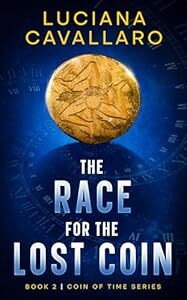
The Race for the Lost Coin
(Book 2 Coin of Time Series)
by Luciana Cavallaro
Blurb:
Fans of Indiana Jones will love the action and the chase for supernatural artefacts.
Nik races to Paris to find an ancient coin with mythological forces before a clandestine organisation can use its destructive power to wipe out civilisations. However, the trip does not go as expected. Nik’s grandfather has been kidnapped, and he is on the run, evading the French police, Interpol agents and a powerful, wealthy Slovakian magnate.
Nik teams up with a French taxi driver, a hacker and a librarian to avoid capture. Clues take him to Geneva and Rome, where he learns there is more to the coin than what his grandfather told him. After a close encounter with the police, Nik forms an alliance with the most unlikely partner—Detective Sauveterre. But is that the right decision?
Fans of Steve Berry, James Rollins, and Dan Brown will love this latest action-packed and suspense story from Award-Winning author Luciana Cavallaro.
Purchase links:
Direct: The Race for the Lost Coin – lucianacavallaro
Amazon: https://www.amazon.com/Race-Lost-Coin-Time-Book-ebook/dp/B0FT6NFJHS/
Smashwords: https://www.smashwords.com/books/view/1874709
All other stores: https://books2read.com/rftlc
AUTHOR BIO: LUCIANA CAVALLARO

Luciana Cavallaro is a genre-bending, multi award-winning author known for weaving gripping tales that blend myth, history, and adventure. Her acclaimed novels—The Labyrinthine Journey, Minotaur’s Lair, and The Guardian’s Legacy—have earned recognition in both the action/adventure and historical fiction arenas. She was a finalist in the 13th New Media Film Festival and a quarterfinalist in the 2022 ScreenCraft Cinematic Book Competition.
Her storytelling journey began earlier than most—at age three, she made a bold (and slightly chaotic) attempt to drive the family car, giving her father his first taste of high blood pressure and setting the tone for a life full of daring quests.
Explore more of her adventures at https://lucianacavallaro.me/
Links to Socials:
BookBub https://www.bookbub.com/authors/luciana-cavallaro
FaceBook https://www.facebook.com/pages/Luciana-Cavallaro-Writer/304218202959903?ref=hl
Twitter/X https://twitter.com/ClucianaLuciana
Goodreads http://www.goodreads.com/author/show/6567841.Luciana_Cavallaro
Instagram https://www.instagram.com/authorluciana/
GUEST POST: TRAVEL—THE BEST EXPERIENCE THATLUCIANA CAVALLARO HAS HAD

Travel has been one of the greatest teachers and sources of inspiration in my life. I’ve been fortunate to visit a number of countries across Europe—experiences that have not only enriched my understanding of history and culture but also deeply influenced my writing.
For instance, my Servant of the Gods series was born from my fascination with ancient history and mythology, particularly the legend of Atlantis and the Minoans—the first known civilisation of Crete. Visiting Heraklion and exploring the archaeological site of Knossos was an unforgettable experience. As I wandered through the palace ruins, I couldn’t help but imagine the myths of Theseus and the Minotaur coming to life around me.
The scale of the site is extraordinary—truly monumental. Sir Arthur Evans, the archaeologist who unearthed Knossos, named the civilisation after King Minos. While his reconstructions and interpretations have since been refined, walking through that ancient space—knowing it dated back to around 5000 BCE—was thrilling. The Minoans had hot and cold running water and even flushing toilets, long before the Romans developed aqueducts! Standing there, surrounded by echoes of the past, I felt both awe and gratitude to witness the ingenuity of an ancient world.
My Coin of Time series, set in the modern day, draws from my more recent travels. The protagonist journeys from Perth (my home) to Paris, Marseille, Geneva, Rome, Vienna, and Madrid—destinations I’ve personally explored and adored. These settings aren’t chosen at random; they’re places that left an imprint on me.
I remember standing atop the Eiffel Tower, gazing out over the glittering city below; wandering the Louvre for hours, completely absorbed in its artistic treasures—from the Romantics to the Impressionists, and the stunning sculptures of Greece, Rome, Egypt, Persia, and the Middle East. Strolling down the grand boulevards, marvelling at the Arc de Triomphe, or sipping coffee in a Parisian café—these experiences all found their way into my imagination and, eventually, my stories.
BOOK REVIEW: THE RACE FOR THE LOST COIN
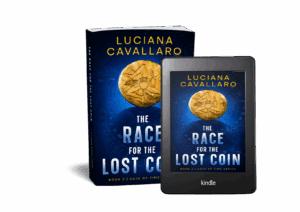
Timing is running out as Nik Zosimo races to find the second ancient coin that, with one flip, could destroy world order. The Race to the Lost Coin by Luciana Cavallaro is the second book in the international thriller Coin of Time Series. Nik, an Australian school teacher already possessing one of the coins, galvanizes into action when he learns a clandestine, neo-Nazis society has kidnapped his grandfather and is scheming to combine the two ancient coins and unleash their destructive forces. The French Police and INTERPOL mistakenly believe Nik is part of the secret organization and is in hot pursuit of him. With the aid of a taxi driver, a hacker, and a librarian, Nik needs to outwit law enforcement agencies and hitmen in his quest to save his grandfather and to find the second coin. However, should he dare trust the attractive Detective Alexandrie Sauveterrre, who is as likely to arrest him than to help him find his grandfather and the other ancient coin.
Author Luciana Cavallaro has written a taut thriller/suspense with mythological elements woven into the storyline, adding another layer connecting the present to the past. The backstory weaves smoothly into the narrative, giving enough information for the book to be read as a standalone. However, I suggest reading the entire series as each book ends on a cliffhanger.
There is a good balance of riveting actions scenes, natural dialogue, and internal thoughts for a page-turning story. Nik is an engaging character who thinks quickly on his feet. He learns from his mistakes and diligently plans his next moves accordingly. A skilled female hacker and a librarian help him to evade police and potential assassins. Suspense heightens when Nik seeks Detective Sauveterre’s help to uncover the truth about the French police’s role in a nefarious conspiracy. Alexandrie is a compelling character and a match for Nik. Potential romance sparks between the two as they play a cat and mouse game.
Fans of genre-bending suspense connecting the present to the mythical past should enjoy reading The Race to the Lost Coin, a fast-paced adventure about ancient coins that could doom the future with one flip. It reminds me of the adventures of Indiana Jones, an everyday hero who relies on luck and wit instead of supernatural strength. Highly recommended.
Blog Tour Luciana Cavalarro The Race for the Lost Coin #Suspense #Thriller #GreekMyth #CoinofTime @ClucianaLuciana
I’m delighted to host the blog tour for Author Luciana Cavalarro, featuring The Race for the Lost Coin (Book 2 Coin of Time Series), scheduled to be released on November 29th. The second book picks up where the first award-winning book, The Gaurdian’s Legacy, leaves off. I had the opportunity to read an advance copy of The Race for the Lost Coin that ratches up the action and heightens the stakes. It is a unique story that weaves in Greek mythology of Heracles finding a stone with destructive powers. Two coins are minted from the stone. Throughout the ages, a Guardian safeguards the coins from nefarious organization that could unleash the coins’ powers to destroy civilizations. A modern-day Australian school teacher, Nik, takes on the guardianship of the coins from his grandfather, but he never expects the dangers he faces in his pursuit for the lost coin.
Below are highlights of The Race for the Lost Coin, Luciana Cavalarro’s author bio, and a guest post on Luciana’s travels that inspired her writing. Lastly is my review of the heart-pounding international suspense that raises the stakes that nations could be destroyed unless Nik finds the coins before a secret chlandestine group does.
HIGHLIGHTS: THE RACE FOR THE LOST COIN

The Race for the Lost Coin
(Book 2 Coin of Time Series)
by Luciana Cavallaro
Blurb:
Fans of Indiana Jones will love the action and the chase for supernatural artefacts.
Nik races to Paris to find an ancient coin with mythological forces before a clandestine organisation can use its destructive power to wipe out civilisations. However, the trip does not go as expected. Nik’s grandfather has been kidnapped, and he is on the run, evading the French police, Interpol agents and a powerful, wealthy Slovakian magnate.
Nik teams up with a French taxi driver, a hacker and a librarian to avoid capture. Clues take him to Geneva and Rome, where he learns there is more to the coin than what his grandfather told him. After a close encounter with the police, Nik forms an alliance with the most unlikely partner—Detective Sauveterre. But is that the right decision?
Fans of Steve Berry, James Rollins, and Dan Brown will love this latest action-packed and suspense story from Award-Winning author Luciana Cavallaro.
Purchase links:
Direct: The Race for the Lost Coin – lucianacavallaro
Amazon: https://www.amazon.com/Race-Lost-Coin-Time-Book-ebook/dp/B0FT6NFJHS/
Smashwords: https://www.smashwords.com/books/view/1874709
All other stores: https://books2read.com/rftlc
AUTHOR BIO: LUCIANA CAVALLARO

Luciana Cavallaro is a genre-bending, multi award-winning author known for weaving gripping tales that blend myth, history, and adventure. Her acclaimed novels—The Labyrinthine Journey, Minotaur’s Lair, and The Guardian’s Legacy—have earned recognition in both the action/adventure and historical fiction arenas. She was a finalist in the 13th New Media Film Festival and a quarterfinalist in the 2022 ScreenCraft Cinematic Book Competition.
Her storytelling journey began earlier than most—at age three, she made a bold (and slightly chaotic) attempt to drive the family car, giving her father his first taste of high blood pressure and setting the tone for a life full of daring quests.
Explore more of her adventures at https://lucianacavallaro.me/
Links to Socials:
BookBub https://www.bookbub.com/authors/luciana-cavallaro
FaceBook https://www.facebook.com/pages/Luciana-Cavallaro-Writer/304218202959903?ref=hl
Twitter/X https://twitter.com/ClucianaLuciana
Goodreads http://www.goodreads.com/author/show/6567841.Luciana_Cavallaro
Instagram https://www.instagram.com/authorluciana/
GUEST POST: TRAVEL—THE BEST EXPERIENCE THATLUCIANA CAVALARRO HAS HAD

Travel has been one of the greatest teachers and sources of inspiration in my life. I’ve been fortunate to visit a number of countries across Europe—experiences that have not only enriched my understanding of history and culture but also deeply influenced my writing.
For instance, my Servant of the Gods series was born from my fascination with ancient history and mythology, particularly the legend of Atlantis and the Minoans—the first known civilisation of Crete. Visiting Heraklion and exploring the archaeological site of Knossos was an unforgettable experience. As I wandered through the palace ruins, I couldn’t help but imagine the myths of Theseus and the Minotaur coming to life around me.
The scale of the site is extraordinary—truly monumental. Sir Arthur Evans, the archaeologist who unearthed Knossos, named the civilisation after King Minos. While his reconstructions and interpretations have since been refined, walking through that ancient space—knowing it dated back to around 5000 BCE—was thrilling. The Minoans had hot and cold running water and even flushing toilets, long before the Romans developed aqueducts! Standing there, surrounded by echoes of the past, I felt both awe and gratitude to witness the ingenuity of an ancient world.
My Coin of Time series, set in the modern day, draws from my more recent travels. The protagonist journeys from Perth (my home) to Paris, Marseille, Geneva, Rome, Vienna, and Madrid—destinations I’ve personally explored and adored. These settings aren’t chosen at random; they’re places that left an imprint on me.
I remember standing atop the Eiffel Tower, gazing out over the glittering city below; wandering the Louvre for hours, completely absorbed in its artistic treasures—from the Romantics to the Impressionists, and the stunning sculptures of Greece, Rome, Egypt, Persia, and the Middle East. Strolling down the grand boulevards, marvelling at the Arc de Triomphe, or sipping coffee in a Parisian café—these experiences all found their way into my imagination and, eventually, my stories.
BOOK REVIEW: THE RACE FOR THE LOST COIN

Timing is running out as Nik Zosimo races to find the second ancient coin that, with one flip, could destroy world order. The Race to the Lost Coin by Luciana Cavallaro is the second book in the international thriller Coin of Time Series. Nik, an Australian school teacher already possessing one of the coins, galvanizes into action when he learns a clandestine, neo-Nazis society has kidnapped his grandfather and is scheming to combine the two ancient coins and unleash their destructive forces. The French Police and INTERPOL mistakenly believe Nik is part of the secret organization and is in hot pursuit of him. With the aid of a taxi driver, a hacker, and a librarian, Nik needs to outwit law enforcement agencies and hitmen in his quest to save his grandfather and to find the second coin. However, should he dare trust the attractive Detective Alexandrie Sauveterrre, who is as likely to arrest him than to help him find his grandfather and the other ancient coin.
Author Luciana has written a taut thriller/suspense with mythological elements woven into the storyline, adding another layer connecting the present to the past. The backstory weaves smoothly into the narrative, giving enough information for the book to be read as a standalone. However, I suggest reading the entire series as each book ends on a cliffhanger.
There is a good balance of riveting actions scenes, natural dialogue, and internal thoughts for a page-turning story. Nik is an engaging character who thinks quickly on his feet. He learns from his mistakes and diligently plans his next moves accordingly. A skilled female hacker and a librarian help him to evade police and potential assassins. Suspense heightens when Nik seeks Detective Sauveterre’s help to uncover the truth about the French police’s role in a nefarious conspiracy. Alexandrie is a compelling character and a match for Nik. Potential romance sparks between the two as they play a cat and mouse game.
Fans of genre-bending suspense connecting the present to the mythical past should enjoy reading The Race to the Lost Coin, a fast-paced adventure about ancient coins that could doom the future with one flip. It reminds me of the adventures of Indiana Jones, an everyday hero who relies on luck and wit instead of supernatural strength. Highly recommended.
November 15, 2025
Book Review Vengeance of the Damned Eric Schumacher #BookReview #OlafsSaga #VikingAge #HistoricalFiction #Adventure #HistoricalNorseFiction @DarkAgeScribe
I’m delighted to post my 5-star review of his Historical Norse Adventure, Vengeance of the Damned (Book 5 Olaf’s Saga), released by Bodn Books on October 2, 2025. Author Eric Schumacher is a masterful storyteller who immerses you into the tale of the legendary Olaf Tryggvason from his rise from the horrors of slavery to the King of Norway in the five-book Olaf’s Saga. However, Olaf’s impact is told from the point of view of one of his lifelong friends and protector, Torgil. I’ve been immersed in the Viking Age Saga since the release of the first book, Forged by Iron. What makes this series rise above the others are its compelling characters, riveting action scenes, and multi-layered themes of friendship vs. betrayal, vengeance vs. redemption, and religious divisions. The universal themes resonated with me long after I finished each book.
Below are highlights of Vengeance of the Damned, Eric Schumacher’s author bio, and my review of the final book in the gripping tale with themes of vengeance and redemption.
HIGHLIGHTS: VENGEANCE OF THE DAMNED
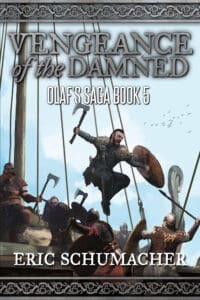
Vengeance of the Damned
Olaf’s Saga Book 5
By Eric Schumacher
Vengeance of the Damned is the gripping, final novel in the award-winning series chronicling the life and adventures of Olaf Tryggvason, one of Norway’s most controversial kings.
It is AD 995. Driven from his homeland as a lad, the long-wandering King Olaf Tryggvason has finally returned to Norway with an army at his back and vengeance on his mind. But Olaf does not just want to rule the Northern kingdom. He has more ambitious plans for the realm and will put to the sword anyone who stands in his way.
His cruel campaign sets him on a collision course with his former oath-brother turned enemy, Torgil. Unable to escape the coming clash, Torgil and his band of outcasts face the new king and his battle-hardened warriors. From the land of the Swedes, to the islands of the Vik, and finally, to a place called Svold off the coast of Denmark, Olaf and Torgil match their wills and their cunning in this brutal, action-packed conclusion to Olaf’s Saga.
Book Link: https://www.amazon.com/dp/B0FT1N1K9B/
AUTHOR BIO: ERIC SCHUMACHER

BOOK REVIEW: VENGEANCE OF THE DAMNED
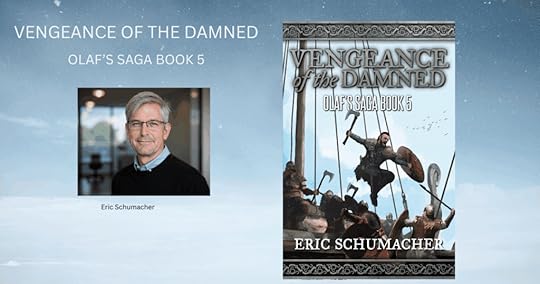
For most of his life, the battle-hardened Norse warrior, Torgil, has protected his friend, the legendary Olaf Tryggvason. However, in the final book of Olaf’s Saga, Vengeance of the Damned, Torgil has been cast aside by Olaf for refusing to accept the Christian belief. Togil’s desperate predicament to escape Olaf’s deadly wrath is highlighted in chapter 1: “A snow-filled wind had kicked up in the afternoon and now blew at me as if from a bellows, its sting bringing tears to my eyes as it sought every seam in my clothing.”
The epic Norse adventure continues in 989 A.D., when Torgil faces a crossroad on how he can move forward with “death’s inevitable claw” tightening around him. He gains support of Signurd’s former fighters and sails to reclaim his homeland, Jel, as its sovereign. Meanwhile, power dynamics shift in the Scandinavian region when Olaf returns to Norway with an army, becomes its king, and threatens to convert other regions to Christianity with brutal force. Torgil allies with other regional rulers and lures Olaf into a final sea battle to stop his brutal campaign.
Author Eric Schumacher is a masterful storyteller that not only vividly describe action scenes but delves into Torgil’s deepest thoughts about how he wants to fulfill rest of his life. Previous challenges shape Torgil into a resilient and respected jarl. He takes control of his destiny and no longer blindly follows other leaders intoxicated with power. He seeks redemption by building a peaceful and prosperous settlement in his homeland.
Although the novel can be read as a standalone, I highly recommend reading the entire series to appreciate Torgil’s life journey and his evolving relationship with Olaf. Torgil’s development into a just leader is compelling and heartfelt. What makes this series stand out are its complex characters, cinematic battle scenes, and multi-layered themes of political corruption, love vs. duty, vengeance vs. redemption, and friendship vs. betrayal. Olaf’s Saga captures the turmoil of Viking culture and warfare, strife between Christian and pagan religions, and internal and regional divisions. It reminds me of Bernard Cornwell’s The Last Kingdom with the rise and fall of kings and nations during the Viking age. Extra bonuses in the books include regional maps and a glossary of terms used in the narrative.
Vengeance of the Damned is a gripping and satisfying conclusion to the Olaf’s Saga with its memorable characters, riveting action scenes, and thought-provoking themes of vengeance and redemption.
November 11, 2025
Samantha Ward-Smith Ravenscourt #HistoricalRomance #HistoricalFiction #GothicRomance #BlogTour #TheCoffeePotBookClub @SammyJoAstro @cathiedunn
It’s my pleasure to introduce Samantha Ward-Smith as the featured author in The Coffee Pot Book Club Blog Tour being held between November 10th – 21st, 2025. Samantha Ward-Smith is the author of the Historical Fiction / Gothic Romance, Ravenscourt, published by Mabel and Stanley Publishing on October 23rd, 2025 (343 pages).
Below are highlights of Ravenscourt, Samantha Ward-Smith’s author bio, and an excerpt from the book.
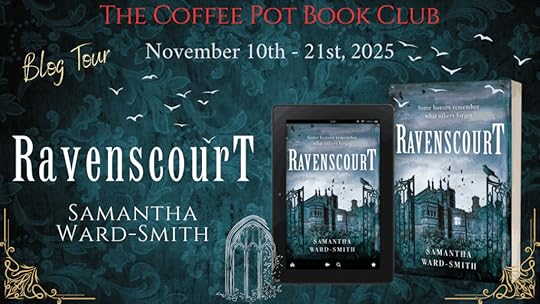
Tour Schedule Page: https://thecoffeepotbookclub.blogspot.com/2025/10/blog-tour-ravenscourt-by-samantha-ward-smith.html
HIGHLIGHTS: RAVENSCOURT
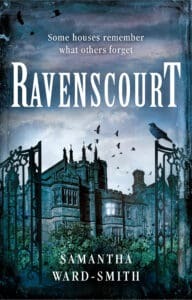
Ravenscourt
By Samantha Ward-Smith
Blurb:
He wanted to be gone from the dark enclosing room, with its mocking misery, to be gone from this house of nightmares, of shattered dreams, and discovered secrets which could not be put back in the box.
Venice, 1880.
Alexander, Viscount Dundarran, seeks refuge from scandal amidst the fading grandeur of crumbling palazzos during the infamous Carnival in the city. There he encounters the enigmatic Lady Arabella Pembrook—a young, beautiful widow. Both are scarred by their pasts but find solace in each other and a chance at redemption.
But when duty calls Alexander back to England upon his father’s death, a darker journey begins. Travelling to Ravenscourt, the decaying estate once belonging to Arabella’s late husband, Alexander must confront the house’s disturbing legacy which has echoed through the generations. Within its walls lie secrets that refuse to stay buried and will threaten everything he thought he knew. But can Alex uncover the truth in time?
Any Triggers: Sexual content / references to domestic abuse
Buy Link:
Universal Buy Link: https://books2read.com/u/mvJLpV
This title is available to read on #KindleUnlimited.
AUTHOR BIO: SAMANTHA WARD-SMITH

Samantha Ward-Smith is the author of Tower of Vengeance, her debut historical novel set in the Tower of London during the 13th century, and the forthcoming Ravenscourt, a Victorian Gothic tale unfolding across Venice, London, and the windswept Lancashire moors. She lived in London for over three decades, building a career in investment banking while also pursuing a PhD in English at Birkbeck.
For the past 13 years she has volunteered at the Tower of London, an experience that provided invaluable historical insight and directly shaped her writing. Now based in Kent by the sea, Samantha continues to explore the intersections of history, place, and story, writing in the company of her two cats, Belle and Rudy.
Author Links:
Website Twitter / X Facebook Instagram Threads
Bluesky TikTok Amazon Author Page Goodreads
EXCERPT: RAVENSCOURT
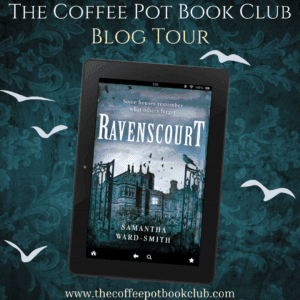
Alex found himself in a small formal room off the main portego, talking to a group of masked women, all seemingly competing for his attention and laughing eagerly at his every word although he said very little. They pressed upon him endless information regarding the delights of Venice, the best shops, the best coffee places, and of course more invitations to visit their own Palazzos and their upcoming soirees as part of the Season’s festivities. Eager to distract himself, he glanced up and discovered a beautiful ceiling covered entirely with fruit trees, flowers, and numerous birds. In one corner of the magnificent fresco, he spotted an owl carrying off a smaller bird, and he envied the unfortunate bird, wishing he too could be carried off away from the gabble of women congregated around him. The heat of the room pressed down on him and he swayed slightly, feeling it all becoming too much.
‘Ladies, please excuse me,’ he said with a bow and, giving no further explanation, abruptly turned away from them, pushing through the other guests, desperate to get away from the noise. He spotted a closed door at the end of the room and made his way towards it, hoping it was empty so that he could escape the maddening crowd if only for a little while. He eased open the heavy door and inside the room only a few lights flickered. As he closed the door behind him, the noise receded and in the semi-gloom he could see a few of the classical sculptures the Grimani family were famous for. He leant against the door and closed his eyes in respite.
He was startled by a polite cough and opened his eyes to find he was not alone after all. Sitting on a small, padded bench between two statues at the end of the room, which he vaguely recognised as Diana the huntress and Venus the goddess of love, was a woman. She had been shadowy in the faint light of the room but now, as he moved towards her and she gazed directly at him, he could see an incredibly striking young woman. Her face could have been sculpted by the man who had made the Diana next to her, and he was stunned to see such beauty.
‘I apologise, my Lady. I thought the room was empty.’ He was tentative now, aware of the impropriety of being alone with her.
‘Please do not apologise. I too needed a moment away from the crowd.’ She smiled politely at him as his eyes widened at the sound of her American accent.
Not a Roman goddess after all, he thought.
As Alex studied her further, it was as if she was a female version of himself. She had the same thick black hair as he, although hers was swept back into a fashionable bun with curls that framed her face, seeming natural and not made with artifice. Her cheekbones could have been etched from the same bone structure as his, but it was the eyes which mirrored his own the most – a deep brown colour which appeared almost black and edged with an abundance of lashes. Her skin too was pale, translucent even, and similar to him, she had faint dark circles under her beautiful eyes. There was an aura of sadness around her which gave an air of fragility. Then he noticed the black crepe of her dress, the lack of adornment which contrasted with the gaudy, colourful costumes of the other ladies and the heavy mourning ring on her gloved hand.
‘Forgive me, you are in mourning.’ He bowed his head at the realisation.
‘Yes.’ Her voice was soft. ‘It is a year since I lost my husband, Charles. But I am now allowing myself to come back into company. Tomorrow I may even wear lilac, which is wrong of me apparently, but I can’t bear black any longer, especially not in a city that is filled with so much colour.’ She gave him a weak smile, although he could see her struggling to hide her emotions. ‘My aunt insisted I come out tonight. My name is Lady Arabella Pembrook.’ Alex thought he knew the name but could not place it.
‘Alexander FitzOsbern, Viscount Dundarran, my Lady,’ he said, reaching out and kissing her delicate, gloved hand. ‘But you hardly look old enough to be a widow, may I say.’
‘You sir are too kind!’ She smiled. ‘I am nearly thirty. I also have two stepchildren who are seventeen and twenty years old, would you believe?’ She sighed quietly.
Alex was unsure of how to act around her or what to say in response. She broke the awkward silence by standing up and gesturing towards an open door at the far end of the room.
‘Have you seen the famous Tribune room?’
Alex looked at her blankly.
‘It’s our host’s most important collection and not to be missed,’ she admonished, teasing him. As they walked towards it, he noticed she matched him in height, though she was far more graceful and poised. As they entered the room, he gasped.
‘It’s stunning, isn’t it?’ she whispered in his ear.
Suspended from the highly decorated ceiling was the most spectacular sculpture Alex had ever seen. A naked youth was clasped in the grip of a large eagle, who was carrying him upwards to the window which appeared high in the ceiling above them. Only the moonlight lit the room, making the sculpture eerily luminous. The rest of the collection was in the shadows, insignificant to the entwined figures. It was a masterpiece of theatre and sent a shiver down his spine.
‘The abduction of Ganymede?’ he asked in wonder.
‘Yes, that most beautiful of mortals who was taken by Zeus, disguised as an eagle, to serve the gods. I find it sad how this gorgeous young boy was made to serve a much older man. Such is the way of the world. Art such as this is frivolous in my eyes,’ she remarked.
There was silence as they both stood studying it for a few moments. When Alex turned at last to speak to Arabella, he noticed tears in her eyes.
‘I’m sorry, I am banishing ghosts,’ she said in a hushed voice, quickly wiping her eyes, and turning from the room.
 Twitter: @cathiedunn
Twitter: @cathiedunn
Instagram & Threads: @thecoffeepotbookclub
Bluesky: @cathiedunn.bsky.social
November 4, 2025
Erryn Lee What Remains #HistoricalFiction #DualTimeline #TimeSlipFiction #HistoricalThriller #ForensicFiction #AncientRome #Vesuvius #BlogTour #TheCoffeePotBookClub @erryn_lee @cathiedunn
It’s my pleasure to introduce Erryn Lee as the featured author in The Coffee Pot Book Club Blog Tour being held between November 3rd – 7th, 2025. Erryn Lee is the author of the Historical Fiction / Dual Timeline / Forensic Mystery, What Remains, published by Historium Press on September 13th, 2025 (392 pages).
Below are highlights of What Remains, Erryn Lee’s author bio, and an excerpt from the book.
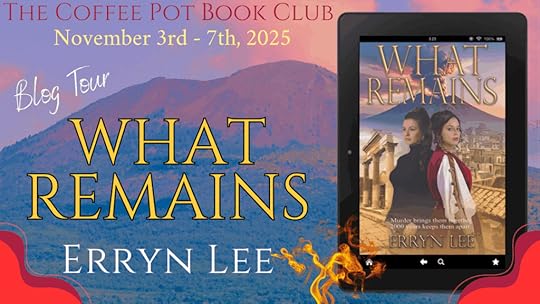
Tour Schedule Page: https://thecoffeepotbookclub.blogspot.com/2025/10/blog-tour-what-remains-by-erryn-lee.html
HIGHLIGHTS: WHAT REMAINS
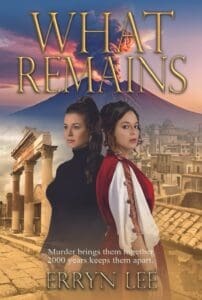
What Remains
By Erryn Lee
Blurb:
What Remains is a haunting dual-timeline mystery that bridges centuries-and secrets-between ancient Rome and the modern world.
Forensic anthropologist Tori Benino has just landed the opportunity of a lifetime: leading a dig at a long-buried Roman village lost to the eruption of Vesuvius. But when she uncovers the remains of a Praetorian guard hidden in an ancient latrine-clearly murdered-Tori realizes she’s stumbled onto something far more sinister than a routine excavation. As she digs deeper into the past, her own carefully ordered life begins to fall apart.
Nearly two thousand years earlier, Thalia, the daughter of a wealthy merchant, is desperate to escape an arranged marriage to a brutal and politically powerful senator. Her only hope lies with a Praetorian soldier assigned to guard her-but trusting him could cost her everything.
As past and present collide, What Remains asks: When history is buried, what truths refuse to stay hidden?
Perfect for fans of Kathy Reichs and Kate Quinn, this novel is inspired by true events and delivers a compelling blend of suspense, history, and heart.
Any Triggers: abuse (physical, emotional, sexual), violence, sexual assault, death (including character death), graphic content (including blood, gore, or medical descriptions), reference to war, and the exhumation of remains from mass graves.
Buy Link:
Universal Buy Link: https://books2read.com/u/38zlxL
AUTHOR BIO: ERRYN LEE

Erryn Lee has spent most of her life between the covers of books, her love for historical fiction drew her to a career as an English and History teacher, where she enjoys sharing her passion for both language and the past with young adults (at least until she needs to give it up to write full time).
When not teaching or writing she is deeply immersed in research and studying her Masters in History. Erryn lives with her husband, a fluctuating number of horses and three bossy cavoodles on a horse farm in the picturesque central west of NSW, Australia.
Author Links:
Website: www.errynlee.com
Twitter / X: https://x.com/erryn_lee
Facebook: https://www.facebook.com/erryn.lee.author/
Instagram: https://www.instagram.com/erryn.lee/
Amazon Author Page: https://www.amazon.com/stores/Erryn-Lee/author/B0FKH5VCTG
Goodreads: https://www.goodreads.com/author/show/57935202.Erryn_Lee
EXCERPT: WHAT REMAINS
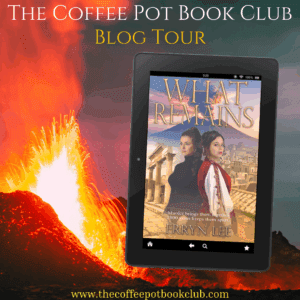
She let her gaze linger on the Praetorian as the flow of humanity pressed between them. ‘Why are you here? Surely a man with your talent would be better guarding Messalinus?’
He looked at her, brow furrowed. ‘Your husband wants you protected.’
She sniffed. ‘Protection for me is the last thing on Messalinus’ mind.’
She began to walk again, after a moment he kept pace.
‘Perhaps your husband felt he was better served by having me carry your shopping.’
‘Do it then.’
His stride faltered. ‘Do what?’
She turned towards the slave boy and plucked the awkward bundle of scrolls from his arms, holding them out to the Praetorian. ‘Carry my shopping.’ She pushed them at him and he had little choice but to grab them or allow them to fall. ‘I am sure if someone attacks me you can beat them to death as easily with a scroll as you could bloody them with your sword.’
She raised an eyebrow challengingly. Behind her the slave boy surreptitiously stretched his arms, arching his neck, relieved to have been unburdened.
He glared at her murderously but he did not let them fall.
‘Come, Praetorian, we have much left to do.’
 Twitter: @cathiedunn
Twitter: @cathiedunn
Instagram & Threads: @thecoffeepotbookclub
Bluesky: @cathiedunn.bsky.social
November 3, 2025
Catherine Mathis Inês #HistoricalFiction #MedievalFiction #BlogTour #TheCoffeePotBookClub @cathiedunn
I’m delighted to host Catherine Mathis as the featured author in The Coffee Pot Book Club Blog Tour being held between October 14th – November 4th, 2025. Catherine Mathis is the author of the Historical Fiction / Medieval / Biographical, Inês (The Queens of Portugal Trilogy, Book 1), published by Histria Fiction / Histria Books on October 14th, 2025 (366 pages).
Below are highlights of Inês, the author bio of Catherine Mathis, and a guest post about the fascinating historical background for the book.
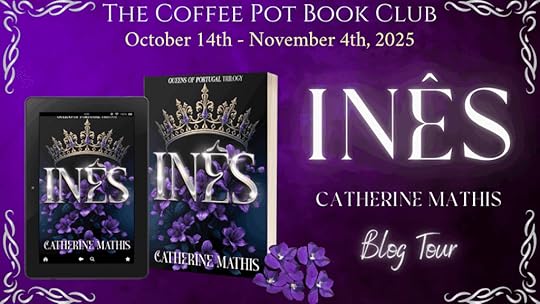
Tour Schedule Page: https://thecoffeepotbookclub.blogspot.com/2025/09/blog-tour-ines-by-catherine-mathis.html
HIGHLIGHTS: INÊS
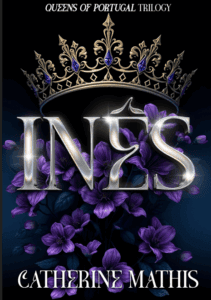
Inês
(
The Queens of Portugal Trilogy,
Book 1)
by Catherine Mathis
Blurb:
An heir to the throne, a gorgeous blonde lady-in-waiting, the king’s trusted advisor. When a father and son don’t understand each other, the son pays an outrageous price.
Love, jealousy, loyalty, and revenge roil the court of 14th century Portugal.
In this engrossing launch to the Queens of Portugal trilogy, Catherine Mathis gives a fresh take on the tale of Pedro and Inês, Portugal’s real-life Romeo and Juliet. Pedro’s father would not have been king if not for his trusted advisor, Gonçalves. Once king, he wants no part in neighboring Castile’s royal convulsions though his son, Pedro, befriends powerful Castilians.
The all-consuming drive of the king is to ensure his line rules Portugal for centuries to come. He needs legitimate, strong heirs. The Infante Pedro loves a woman not deemed worthy to wear the crown as queen. Between father and son is Gonçalves, the king’s powerful, unquestioned counselor who is mentor to the son. Both Gonçalves and Pedro seek the attention of Inês.
There is a horrific cost to winning the love of Inês. She will not release her grip on Pedro until he keeps the two sworn oaths he made to her. Can Pedro do the impossible to satisfy Inês?
Inês is based on real people and events, exploring a cultural touchstone of Portuguese history.
Praise for Inês:
“Mathis masterfully weaves emotional depth into the narrative, creating a deeply engaging experience that leaves a lasting impression and invites readers on an unforgettable journey through the grandeur and intrigue of Portugal’s past.”~ Mary Anne Yarde, The Coffee Pot Book Club 5* Review
“This exciting start to the Queens of Portugal trilogy describes the legendary love story of Pedro and Inês, and I was amazed at the excellent storytelling and how the author brings the courts to life. There is a lot of drama and intrigue, and the characters’ emotions are beautifully captured in this engrossing tale.”
~ Readers Favorite 5* Review
Buy Link:
Universal Buy Link: https://books2read.com/u/br8OBY
AUTHOR BIO: CATHERINE MATHIS
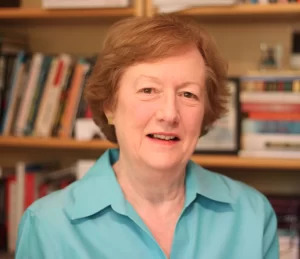
Catherine Mathis was born in Berlin, the daughter of an American spy. As she grew up in Washington, D.C., her spy father turned into a drug enforcement agent. His career change wrecked any chance at high school popularity. She graduated from Sewanee | The University of the South with a degree in history focused on the medieval period. After a career in finance, she returned to her first love of medieval history to ‘Share Iberian Tales.’ Outside of writing, spare time joys are family, friends, reading, collecting folk/outsider art, and travel.
Author Links:
Website: www.catherinemathis.com
Facebook: https://www.facebook.com/profile.php?id=100007239702480
Instagram: https://www.instagram.com/cmathisauthor/
Amazon Author Page: https://www.amazon.com/stores/Catherine-Mathis/author/B0F7FZHJ9T
Goodreads: https://www.goodreads.com/author/show/6987876.Catherine_Mathis
HISTORICAL BACKGROUND: INÊS
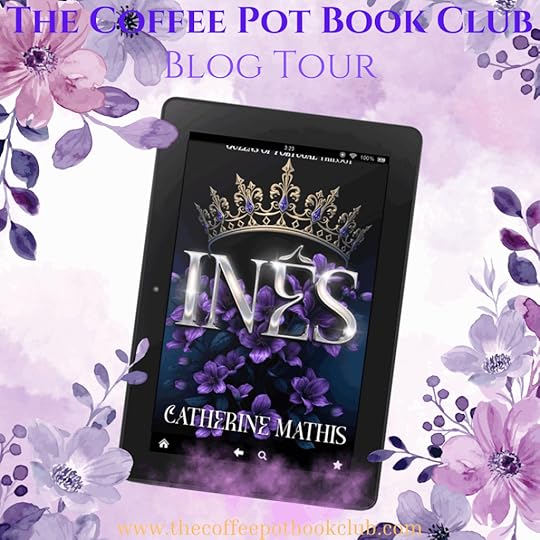
Inês is set in the years 1324 -1364. The novel explores the events underpinning the legend of Pedro and Inês, Portugal’s Romeo & Juliet story.
Portugal pushed out the Muslim rulers in 1139 and became an independent country in 1143. Afonso Henriques, the country’s first king, was a Count in the House of Burgundy, hence the first ruling house of Portugal is referred to as the Burgundians. While borders will fluctuate for centuries, the basic shape of the country is discernable by 1143, making it one of the oldest in Europe. Pedro, the protagonist in the novel, was the grandson of King Dinis who made Portuguese the official language of the country though church affairs remained in Latin. Portugal has a strong sense of self-identity.
King Afonso IV (dies in 1357) and Queen Beatriz are the parents of Pedro, the only one of their four sons who survived infancy. The fate of the family’s rule rests on Pedro providing heirs.
In the period of the novel, the threat of the Moor (as Muslims were referred to) was visceral because they still held parts of Castile to the east and regularly made attempts to seize additional land. The Catholic Church wished for peace among the countries on the Iberian Peninsula to allow them to band together and force the Moor out of Iberia. In 1340 the seminal Battle of Rio (river) Salado will find Portugal riding to help their Castilian neighbors push back a Muslim invasion while the Aragonese military contingent is small and shows up late. While Salado was important in Portuguese history, it is not essential to the Inês story. Alas, territorial disputes and wars of various severity take place between Portugal and Castile/Galicia. In particular, King Afonso wanted to keep Portugal clear of internal disputes in Castile. This is an important motivation for events in the novel.
The feudal state was slowly ebbing away as conflicts over the rights and privileges of the Church and noble class versus royal rule were solidifying under the crown’s control. Powerful noble families were essential to the country’s security as the crown had no dedicated military force. While the nobility had substantial land holdings, the Church (abbeys and bishops) and the four religious military orders (Avis, Hospitaler, Santiago and Christ, formerly Templars) controlled the superior tracts of rural land and privileges in urban areas. For most people, subsistence agriculture was their employment on land they did not own, or working in salt flats, tin mines, or fishing. Portugal and Castile are both significant maritime powers with trade being an important economic engine. Major Portuguese exports were wine, salt, dried fish, almonds, and dried fruits. Textiles and ceramics were regarded as lower quality goods for domestic consumption. For the years of the book, the currency is relatively stable and inflation is not an issue.
As the novel opens, the population is estimated at 1.5MN people of which 10% were noble and less than 1% of the Church. The ‘ricos-homens’ were the honorable citizens in the professions of trade, law, and medicine. The Black Death (or Great Pestilence as it was called) enters Portugal in late 1348 by vessel arriving in the Port of Lisboa and from the north entering via Santiago de Compostela in Galicia. Perhaps half of Lisboa died, and as a country one-third may have died, only estimates as statistics are not available. There are references to a lack of labor available and empty homes. Today Portugal has about 10.5MN people.
A residual Celtic influence from a long-ago invasion remains even today in Portuguese culture. You may be surprised on a trip to come across a band with bagpipes, even sounding Irish to the modern ear. Troubadour culture had its own original characteristics with influences from France via Aragon and even from Muslim culture. Cantigas are the poetry of troubadour songs, the strongest literary form in Portugal in these years. There are three types of songs that survive – addressed to a female, addressed to a male, or mocking/critical songs. King Dinis (of language fame above) wrote 130 cantigas. He also planted a pine forest near Leiria which remains today. Foreign texts were translated in Portuguese on matters of agriculture, medicine, ancient writings, and astrology. While Portugal was an early founder of a university (in 1290 in Lisboa that soon moved to Coimbra), it was not prestigious as a cultural matter. Education for royal and noble people took place in the home and every lord had at least one tutor on the payroll.
King Afonso IV was Portugal’s seventh king. His mother, Elizabeth of Aragon, was canonized as a saint in 1626. His father, King Dinis, had a number of bastard sons, one of which was his favorite, Afonso Sanches, Lord of Albuquerque. Infante Afonso, heir to the throne, was deeply jealous of Afonso Sanches, who he feared would be named king by his father despite being illegitimate. Afonso Sanches shared a love of music and poetry with his father that kept them close, while Afonso was more regimented and strict in his life habits. The rivalry of these two sons of King Dinis led to civil wars often brought to truce by Queen Elizabeth, whose negotiating skills also led to the Treaty of Alcañices in 1290 to end Portugal’s war with Castile. Queen Elizabeth is credited with preventing her husband, King Dinis, from killing their son, then Infante Afonso, during one of their son’s rebellions.
It should not have surprised King Afonso IV when Pedro rebelled against him. But wait – no novel spoilers here.
Inês arrives in Portugal with Constanza Manuel, daughter of Castile’s most powerful noble. Constanza weds Pedro. For the rest of the story…..please enjoy the novel.
 Twitter: @cathiedunn
Twitter: @cathiedunn
Instagram & Threads: @thecoffeepotbookclub
Bluesky: @cathiedunn.bsky.social
October 30, 2025
Paul Rushworth-Brown Outback Odyssey #OutbackOdyssey #HistoricalFiction #AustralianHistory #IndigenousStories #BlogTour #TheCoffeePotBookClub @Brown9Paul @cathiedunn
I’m delighted to host Paul Rushworth-Brown as the featured author in The Coffee Pot Book Club Blog Tour being held between October 27th – 31st, 2025. Paul Rushworth-Brown is the author of the Historical Fiction / Australian Saga / Cultural Encounters, Outback Odyssey, published by Historium Press on 20th June, 2025 (342 pages).
Below are highlights of Outback Odyssey, Paul Rushworth-Brown’s author bio, and an excerpt from the book.
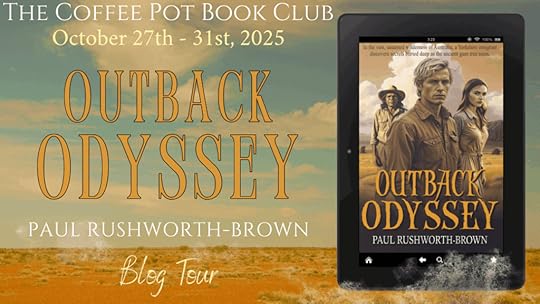
Tour Schedule Page: https://thecoffeepotbookclub.blogspot.com/2025/10/blog-tour-outback-odyssey-by-paul-rushworth-brown.html
HIGHLIGHTS: OUTBACK ODYSSEY
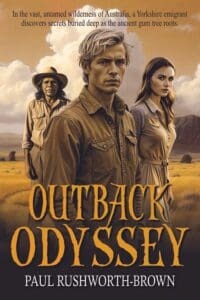
Outback Odyssey
by Paul Rushworth-Brown
Blurb:
1950s Australia. In the wake of war and dislocation, young Yorkshireman Jimmy journeys to the outback, chasing escape but finding something far more dangerous: the truth of himself and the land he now calls home.
What begins as a story of survival becomes a profound allegory of belonging, silence, and identity. As Jimmy collides with love and betrayal, he also encounters the enduring wisdom of the First Peoples — knowledge that most outsiders are too frightened to face, let alone write about.
Outback Odyssey is sweeping and cinematic, a novel of resilience threaded with unexpected twists and allegorical depth. Already under consideration for a screenplay adaptation, it peels back the myths of Australia’s past to reveal what lies beneath: the unspoken histories, the inherited traumas, and the courage it takes to walk a path that others fear.
Any Triggers: Colonial violence, cultural displacement
Buy Link:
Universal Buy Link: https://books2read.com/u/bOvzQo
AUTHOR BIO: PAUL RUSHWORTH-BROWN

Paul Rushworth-Brown was born in England and raised in Canada before emigrating to Australia at eighteen, where he became a citizen. By twenty, he had already travelled the world twice, hitchhiked across Australia, and worked as a navvy in outback Queensland — experiences that gave him an enduring respect for resilience, culture, and the landscapes that shape human character.
He later completed a Master’s degree at Charles Sturt University, honing the research skills that underpin his richly detailed novels. A high school teacher and former professional football coach, Paul draws on a lifetime of experience to bring authenticity and depth to his writing.
His novels are known for their cinematic sweep, allegorical undercurrents, and unexpected twists. Outback Odyssey, his fourth book, is a tale of survival and belonging set against the vast backdrop of 1950s Australia. Beneath its page-turning adventure lie questions of identity, silence, and reconciliation — themes that echo long after the final page.
Paul lives in Sydney, where he writes, teaches, and continues to explore the intersections of history and identity.
Author Links:
Website: https://www.paulrushworthbrown.com
Twitter / X: https://x.com/Brown9Paul
Facebook: https://www.facebook.com/paul.brown.73157203/
Instagram: https://www.instagram.com/author.redwinterjourney
BookBub: https://www.bookbub.com/profile/paul-rushworth-brown
Amazon Author Page: https://bit.ly/4g5kFgZ
Goodreads: https://www.goodreads.com/author/show/19012235.Paul_Rushworth_Brown
EXCERPT: OUTBACK ODYSSEY
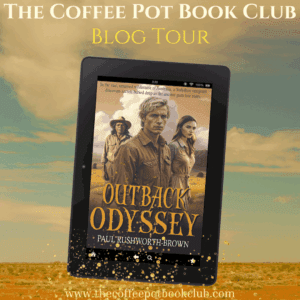
Jimmy & Amanda
Amanda extended her hand, her grip firm and full of energy. “Welcome, Jimmy Brown. I’m glad to have you here.”
Her eyes lingered on him longer than she intended. He wasn’t like the stockmen she had grown up around — sunburnt, rough-edged, all bluster and calloused hands. Jimmy was different. His sharp, freckled features carried a boyishness touched by uncertainty, and his long, blond hair curled at the ends, damp with sweat. But it was his eyes that unsettled her. Blue — not just in colour, but in depth, as if carrying shadows and hopes in equal measure.
Jimmy shifted under her gaze. “Thank you, Mrs…?” he asked, trying to steady himself in this new world, the bush stretching out behind them.
“Amanda,” she said simply, holding his eyes a heartbeat longer.
In that moment, neither the red dust nor the weight of silence that had shaped Jimmy’s past mattered. Here, at the edge of the outback, something had shifted — a beginning neither of them yet understood, but both had already felt.
 Twitter: @cathiedunn
Twitter: @cathiedunn
Instagram & Threads: @thecoffeepotbookclub
Bluesky: @cathiedunn.bsky.social
October 27, 2025
Rosemary Griggs Mistress of Dartington Hall #HistoricalFiction #WomenInHistory #Elizabethan #SpanishArmada #BlogTour #TheCoffeePotBookClub @RAGriggsauthor @cathiedunn
I’m delighted to host Rosemary Griggs again as the featured author in The Coffee Pot Book Club Blog Tour being held between October 20th – 31st, 2025. Rosemary Griggs is the author of the Historical Fiction / Women’s Fiction / Historical Biographical Fiction, Mistress of Dartington Hall (Book 3 – Daughters of Devon), published by Troubador Publishing on July 10th, 2025 (292 pages).
Below are highlights of Mistress of Dartington Hall, the author bio of Rosemary Griggs, and her guest post about researching Roberda for the book
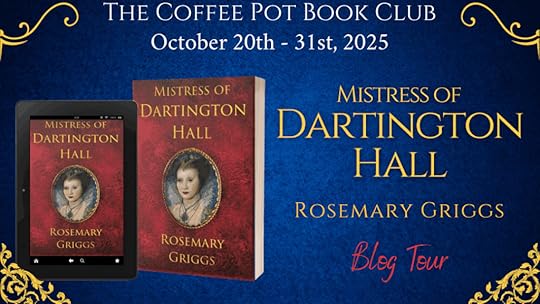 Tour Schedule Page: https://thecoffeepotbookclub.blogspot.com/2025/09/blog-tour-mistress-of-dartington-hall-by-rosemary-griggs.html
Tour Schedule Page: https://thecoffeepotbookclub.blogspot.com/2025/09/blog-tour-mistress-of-dartington-hall-by-rosemary-griggs.html
HIGHLIGHTS: MISTRESS OF DARTINGTON HALL
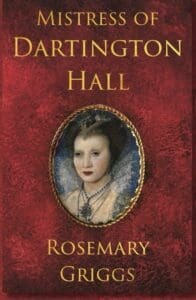
Mistress of Dartington Hall
(Book 3 – Daughters of Devon)
By Rosemary Griggs
Blurb:
England is at war with Spain. The people of Devon wait in terror for King Philip of Spain’s mighty armada to unleash untold devastation on their land.
Roberda, daughter of a French Huguenot leader, has been managing the Dartington estate in her estranged husband Gawen’s absence. She has gained the respect of the staff and tenants who now look to her to lead them through these dark times.
Gawen’s unexpected return from Ireland, where he has been serving Queen Elizabeth, throws her world into turmoil. He joins the men of the west country, including his cousin, Sir Walter Raleigh, and his friend Sir Francis Drake, as they prepare to repel a Spanish invasion. Amidst musters and alarms, determined and resourceful Roberda rallies the women of Dartington. But, after their earlier differences, can she trust Gawen? Or should she heed the advice of her faithful French maid, Clotilde?
Later Roberda will have to fight if she is to remain Mistress of Dartington Hall, and secure her children’s inheritance. Can she ever truly find fulfilment for herself?
Buy Link:
Universal Buy Link: https://books2read.com/u/4jjOZk
AUTHOR BIO: ROSEMARY GRIGGS
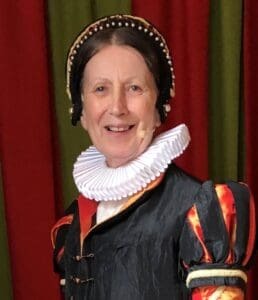
Author and speaker Rosemary Griggs has been researching Devon’s sixteenth-century history for years. She has discovered a cast of fascinating characters and an intriguing network of families whose influence stretched far beyond the West Country. She loves telling the stories of the forgotten women of history — the women beyond the royal court; wives, sisters, daughters and mothers who played their part during those tumultuous Tudor years: the Daughters of Devon.
Her novel, A Woman of Noble Wit, set in Tudor Devon, is the story of the life of Katherine Champernowne, Sir Walter Raleigh’s mother. The Dartington Bride, follows Lady Gabrielle Roberda Montgomery, a young Huguenot noblewoman, as she travels from war-torn France to Elizabethan England to marry into the prominent Champernowne family. Mistress of Dartington Hall, set in the time of the Spanish Armada, continues Roberda’s story.
Rosemary is currently working on her first work of non-fiction — a biography of Kate Astley, childhood governess to Queen Elizabeth I, due for publication in 2026.
Rosemary creates and wears sixteenth-century clothing, and brings the past to life through a unique blend of theatre, history and re-enactment at events all over the West Country. Out of costume, Rosemary leads heritage tours at Dartington Hall, a fourteenth-century manor house that was home of the Champernowne family for 366 years.
Author Links:
Website Twitter / X Facebook Instagram Threads
Bluesky Amazon Author Page Goodreads
GUEST POST: RESEARCHING ROBERDA
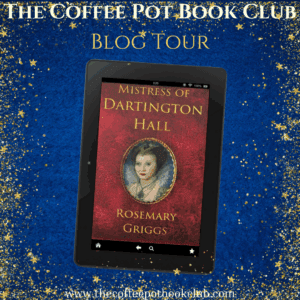
Years of research into the Champernowne family, extensive reading and study of Tudor history underpin my Daughters of Devon novels. I love delving into the archives and poring over ancient papers and parchments as I piece together the lives of the women of Tudor Devon. Uncovering the details of Lady Gabrielle Roberta Montgomery’s life has been fascinating.
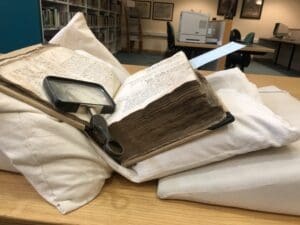
Searching for details in the Devon Archives South West Heritage Trust
I always begin with the few surviving original source documents that refer directly to my subject. Then I spread the net wider and search for family members, parents, husband, children and beyond. I soon discovered that Roberda’s father played an important part in her story. Among the sources I consulted in search of Gabriel de Lorges, Comte de Montgomery, were some interesting texts written in French — notably ‘Montgomery, le regicide’ by Alain Landurant. I had to resort to Google Translate when my schoolgirl French proved inadequate.
Roberda grew up in France during the Wars of Religion. In 1559, her father, Gabriel de Lorges, later Comte de Montgomery, killed the king of France in a jousting accident. He then converted to the Protestant faith and became a prominent Huguenot general in the French Wars of Religion.
When I began my research, I knew little about that period in French history. In England in the sixteenth century, we escaped outright warfare over religion. Discovering the tumultuous events unfolding on the other side of the English Channel, in which Roberda’s family played a leading part, was quite an eye-opener. The French Wars of Religion lasted 36 years, from 1562 to 1598.
There were eight separate conflicts between French Catholics and Protestants (Huguenots), interspersed with periods of uneasy peace. The bloodshed and persecution of the Huguenots was appalling, particularly after the St. Bartholomew’s Day massacre in 1572, which Roberda’s family only narrowly escaped. The letters of the French ambassador to England, Bertrand de Salignac de La Mothe-Fénelon, to the King of France helped me unpick the story of that tragic day in Paris. For example, on 2 October 1572 he wrote that Gabriel had escaped and come secretly to Sir Arthur Champernwone’s house.
William A. Heap’s book, Elizabeth’s French Wars, gave me a lot of useful background detail about how Queen Elizabeth of England sporadically supported the Huguenot cause. Having tracked Roberda’s family through the Wars of Religion, I discovered copious papers relating to her marriage in the records of the Exeter Church Consistory Court.
My initial research yielded the fixed milestones in Roberda’s life, a series of events we know she or members of her family were involved in. To weave her story around those events, I needed to understand the times she lived through, the wider political and social context, and the locations in my story.
I embarked on countless hours of desk research. The internet is rather wonderful, but I always double-check every reference. I did a lot of reading, and I visited places Roberda knew, including Mells and Cloford in Somerset. I undertook some detailed investigations at Dartington Hall to establish the layout during Sir Arthur Champernowne’s time.
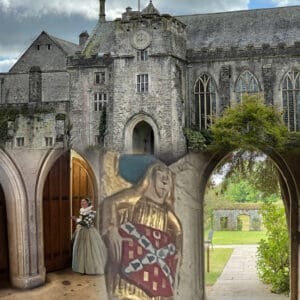
Dartington Hall, Devon, England.
I drew heavily on this research for The Dartington Bride, which covers the Roberda’s early life. To continue Roberda’s story in Mistress of Dartington Hall, I expanded on my previous work, focusing on the era of the Spanish Armada.
We join Roberda in the autumn of 1587. She’s been managing the family estate while her estranged husband, Gawen, has been in Ireland on the Queen’s business. England and Spain had been at war for over two years. Rumours swirled that the Spanish king was building the biggest war fleet ever. Everyone expected they’d try to land first at Falmouth, Plymouth, or Dartmouth, hoping to gain a foothold in England. Thousands of Spanish soldiers would then come ashore and wreak havoc. It must have been a frightening time for the people of Dartington, just sixteen miles upriver from Dartmouth. Unsurprisingly, I uncovered records of several false alarms.
John Roberts’ Devon and the Spanish Armada gave me a wealth of detail specific to Devon, and directed me to other sources. It was easy to discover naval battles, chains of warning beacons, and the roles of the Deputy Lieutenants. England had no standing army, but I learned about musters of poorly equipped and inadequately trained men who would be the first line of defence against the Spaniards.
Finding out what ordinary people were doing proved more difficult. However, the Dartington churchwarden’s accounts gave me helpful clues. In the main, these accounts record income from renting out church lands and minor items of expenditure. In most years I found payments for things like digging graves, cleaning the church, replacing bell ropes, mending the church gate, or providing bread and drink for the bell-ringers. However, in 1587 and 1588, other, more warlike items appear. I found records of payments for polishing the parish armour, purchase of muskets, bows and arrows, four swords and a dagger, and powder and match to serve with a caliver (a lightweight, 16th-century musket or arquebus). I traced the preparations the parish made to go to war, including making bullets, and paying the men who joined Sir John Gilbert, Deputy Lieutenant of the county, on Warborough Common, ready to repel the invaders. In the end, they merely watched as the Spanish fleet sailed by in July 1588.
While the churchwarden’s accounts helped me to understand how the ordinary men of Dartington prepared to go to war, I found no records to tell me what the women did. In wartime, women often step beyond traditional gender barriers. I looked for similar situations throughout history where women stepped up to the plate. I took inspiration from the women who, during the American Civil War, gathered essential supplies for soldiers, including clothing, food, and medical supplies. I researched how English women volunteered as nurses and ambulance drivers, and worked in munitions factories during the First World War. I read about the women who joined the Land Army, and those who stayed at home and ‘Dug For Victory’ during the Second World War.
Providing supplies of food, clothing and medicines for the men mustered to fight against the invaders seemed a likely way Roberda might have made her contribution to the war effort in 1587/88. All parishes kept a few items of often outdated armour safely stored in the church against the need to muster. A few lucky men would wear the parish armour; others would have to make shift for themselves. Woollen or leather jerkins would give scant protection. A jack o’plates — a padded jerkin with pieces of metal stitched in — would be much more effective. I needed to know whether women could successfully make such garments.
After reading as much as I could find, I studied a surviving Jack o’plates at Warwick Castle.
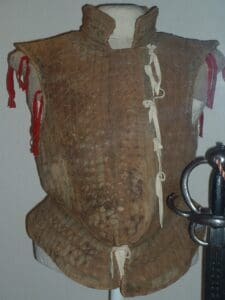
Jack o’plates on display at Warwick Castle
I also checked out the details of another at the Royal Armouries in Leeds. I could see how layers of linen, canvas and padding could form a sandwich around small iron plates. My research revealed that sometimes they cut up outdated suits of armour to provide the metal plates. I could have the Dartington Blacksmith do that. But could women construct such a garment? So next, I had to try some experimental archaeology. I didn’t make an entire padded jerkin, but, after a struggle, I pushed a large needle through the toughest canvas I could get my hands on. The experiment convinced me it would be possible for the women of Dartington to sew a jack o’plates, but only with the right tools. In my story Roberda seeks advice from a sailmaker, who supplies strong sailmaker’s needles.
The war between England and Spain persisted for another 16 years. An attempted counter-armada by the English in 1589 ended in failure. Philip of Spain attempted twice more to invade. The rest of Roberda’s life played out against a background of constant fear that the Spanish might come. Roberda and the women of Dartington played their part, but Gawen’s return brought a lot of tension into Roberda’s life. She faced many other challenges as Mistress of Dartington Hall.
 Twitter: @cathiedunn
Twitter: @cathiedunn
Instagram & Threads: @thecoffeepotbookclub
Bluesky: @cathiedunn.bsky.social



